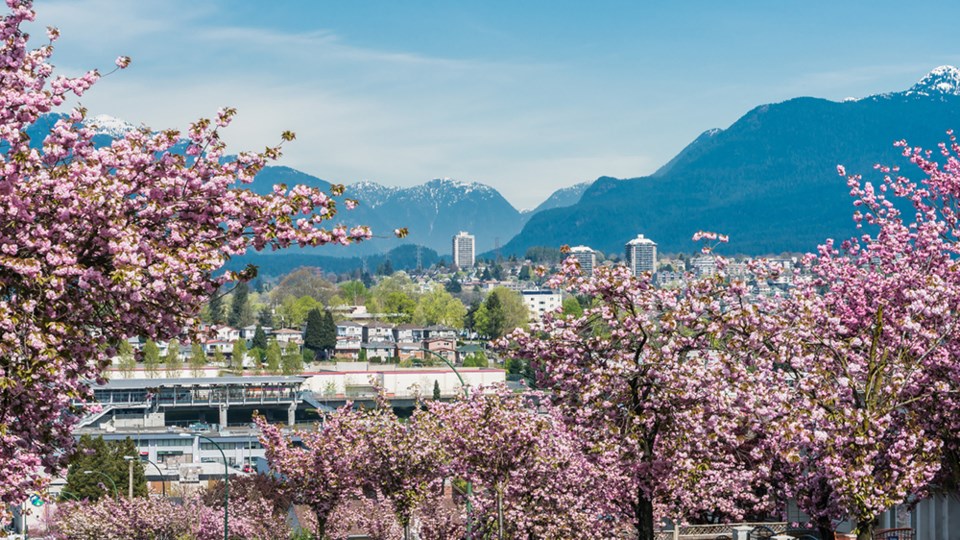March is often the hottest month of the year – at least in terms of real estate sales. But compared with March activity of the past few years, last month was a bit of a wet blanket.
There were 2,517 home sales in March 2018 across the Metro Vancouver region, including the Sunshine Coast and Sea-to-Sky corridor, the Real Estate Board of Greater Vancouver reported. That’s nearly 30 per cent lower than the same month a year ago, and around half the number of transactions in the heady days of March 2016. It’s also 23 per cent below the 10-year average sales for the month.
“We saw less demand from buyers and fewer homes listed for sale in our region in the first quarter of the year,” said Phil Moore, the newly appointed REBGV president. “High prices, new tax announcements, rising interest rates, and stricter mortgage requirements are among the factors affecting home buyer and seller activity today.”
In New Westminster, March's 148 home sales were 46 per cent higher than February's 100 sales, but 12 per cent lower than the same month last year.
But the slowdown in activity hasn’t stopped benchmark prices continuing to creep up overall.
(Story continues below)
The REBGV pegged the composite benchmark home (all property types) across the region at $1,084,000. This is a 16.1 per cent increase over March 2017 and a 1.1 per cent increase compared to February 2018.
In New Westminster alone, the composite benchmark of $708,700 has risen even faster, up 27.8 per cent year over year and up 2.2 per cent in the single month since February.
The board lays the reason for the continued price rises at the feet of the region’s limited supply. It reported that there were 12,469 homes listed in Metro Vancouver during the first quarter of 2018, which is the region’s lowest first-quarter new-listings total since 2013.
Although the total number of homes currently listed for sale on the MLS® in Metro Vancouver is 8,380 – a 10.5 per cent increase over March 2017 and a 7.1 per cent increase compared with last month – the board says this is still too few to offer enough competition to bring prices down.
“Even with lower demand, upward pressure on prices will continue as long as the supply of homes for sale remains low,” Moore said. “Last month was the quietest March for new home listings since 2009 and the total inventory, particularly in the condo and townhome segments, of homes for sale remains well below historical norms.”
The picture also looks very different when separated out by property type. Overall, the sales-to-active listings ratio for March 2018 is 30 per cent, which is still a seller’s market, in which there is typically upward pressure on prices. But by property type, the ratio is 14.2 per cent for detached homes (a balanced market, which is up from last month when it slipped into a buyer’s market), compared with 39.9 per cent for townhomes and 61.6 per cent for condominiums (both strong seller’s markets).
Sales and prices by property type
The market also looks very different when breaking down sales and prices by property type.
Across the region, there were 722 detached home sales in March, a decrease of 37 per cent from the 1,150 detached sales of March 2017 but a 16.2 per cent rise since the weak February of this year. The benchmark price for a single-family home in the region is now $1,608,500, which is a 7.4 per cent year-over-year increase and a 0.4 per cent bump since February.
The REBGV region saw 446 sales of attached homes such as townhouses, duplexes and row homes – this is a 24.1 per cent annual decline, and an 11.2 per cent increase month over month. The price of a typical attached unit across the region is $835,300, which is a 17.7 per cent increase from March 2017 and a two per cent increase in the single month since February 2018.
Condo sales in the region totalled 1,349 units last month, down 26.7 per cent year over year but nearly 14 per cent higher than February this year. The benchmark price of an apartment property now stands at $693,500 across the region. This is a 26.2 per cent increase from March 2017 and a 1.6 per cent increase since February 2018.
Scorching hot Fraser Valley condos
Outside the REBGV’s jurisdiction, real estate activity in the Fraser Valley saw similar overall patterns, with total home sales down 24.8 per cent compared with March of last year, and up 20.1 per cent over February 2018. The total of 1,664 sales was just eight units higher than the region’s 10-year average for March.
At $812,000, the composite benchmark price for a typical home in the Fraser Valley region is now 24.4 per cent higher than a year ago, and up 2.1 per cent since February. The annual price increase breaks down by property type as up 15.2 per cent for detached homes, up 24.9 per cent for townhouses and up a massive 48 per cent for Fraser Valley condos. North Delta, Surrey, North Surrey and Cloverdale all saw year-over-year condo benchmark price rises of more than 50 per cent.
Like in the REGBV’s region, the rising prices and mediocre sales numbers were both explained by a dearth of available units for sale. "We continue to see demand capped-off due to an inadequate amount of supply," said John Barbisan, FVREB president.
Home prices vary widely in different areas throughout the REBGV and FVREB region. To get a good idea of home prices in a specific location and by property type, check the detailed MLS® Home Price Index in the full REBGV statistics package and the FVREB statistics package.



